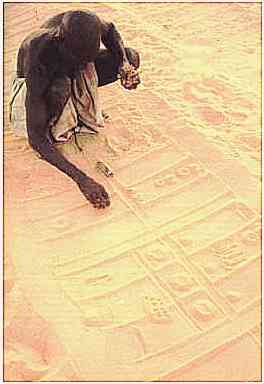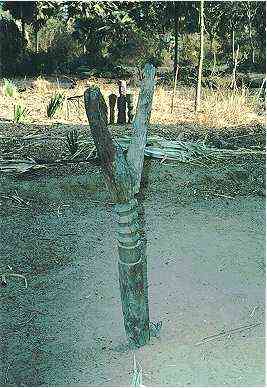
THE INTERPRETATION OF MYTH IN THE CONTEXT OF POPULAR ISLAM
Wim van Binsbergen

 |
THE INTERPRETATION OF MYTH IN THE CONTEXT OF POPULAR ISLAM Wim van Binsbergen |
 |
Abstract
The interpretation of myths, and the relative weight that should be attributed to mythical materials in historical reconstructions based, partly or wholly, on oral evidence, has been a bone of contention ever since Jan Vansina presented a comprehensive statement on methodology in this field (Vansina, 1965). Central Africa can be regarded in several aspects as the cradle of modern oral history and in my recent work on religious change in that region (1979 and 1981), I have had occasion to tough upon these problems. In the present article, however, I shall draw upon materials from North Africa collected during fieldwork in the Khumiriya highlands of North-Western Tunisia in 1968 and 1970. The myth I shall focus upon is that of Sidi Mhammad, a local saint venerated in the area where the foothills of the cool, forest-covered Khumiriya mountains give way to the luscious, wide-open plain of the Wad al Kebir. After presenting the myth and briefly indicating the relatively a historical elements it has to offer to a cultural and structural analysis, within the simplifications enforced by an essay of limited length I shall build up a framework which opens out the historical content of this myth for analysis. This framework is informed, first by an analysis of the social and religious organization of contemporary rural society in this region (such as it was at the end of the 1960s) and, second, by the historical evidence derived from other oral sources in the locality. My argument will thus add a footnote to the religious anthropology and history of the Maghrib. But my main purpose is more general. I aim to show how the historical interpretation of myths should not be attempted in isolation, but against the background of much more comprehensive information about the past and present of a society and of a region. This suggests that the great importance attached to the analysis of myth within the field of oral history may be somewhat exaggerated. Yet in many cases, particularly for the more distant past, and in the context of religious studies, a myth is all the evidence we have got. In such circumstance it would be a pity if we were forced tow holly fall back on the a historical structuralist alternative: and it is advisable for us to steer a middle course with the understanding that it would be dangerous to try to build historical reconstructions on mythical grounds alone.
click on the hyperlinks to access the parts of this paper:
| Part I | 1.
Introduction 2. The myth of Mhammad 3. The myth of Mhammad in the light of cultural and structuralist interpretations 4. Mhammad and Salima as contemporary shrines |
| Part II | 5.
Aspects of the contemporary social and ritual
organization of the region 6. Saintly myths and the history of shrines in Khumiriya 7. The history of Sidi Mhammad 8. Conclusion: The history of Sidi Mhammad and Sidi Salima. References |
| page last modified: 12-02-01 18:06:40 |  |
|||
 |